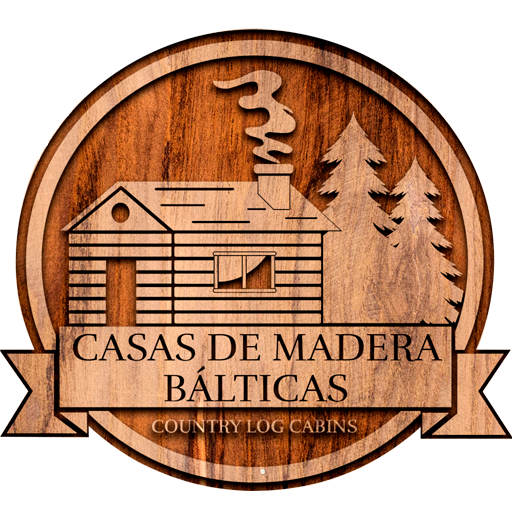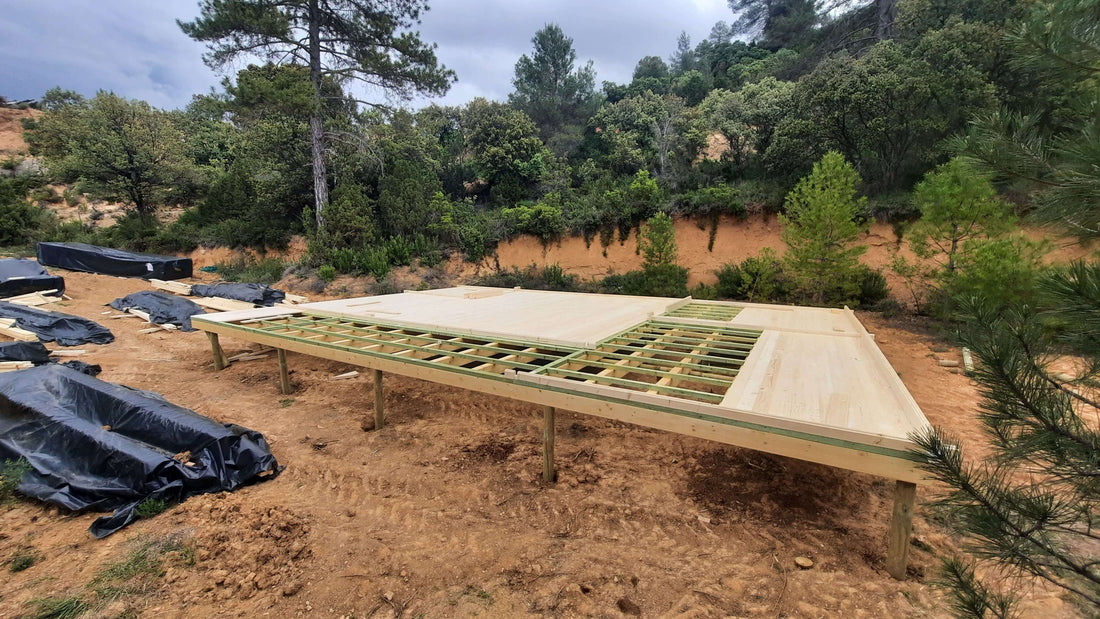At Casas de Madera Bálticas , we know that a proper foundation is essential for homes to maintain their quality and durability over time. When building a home, it's essential that the foundation be solid, as it represents the base on which the entire structure will rest. The stability and durability of prefabricated homes depend directly on the quality of their foundation.
Importance of the Foundation in Prefabricated Houses
Once we transfer the measurements and details specified in the plans to the site, at Casas de Madera Bálticas we ensure that the foundation is precise, well-calculated, and adapted to the soil type. This allows us to avoid future moisture problems that could damage the structure of the house. If the foundation is not built correctly, moisture can seep into the home, eventually weakening the structure and reducing its lifespan.
To ensure watertightness, at Baltic Wooden Houses we use a PVC membrane at the base of the foundation. This high-quality membrane prevents soil moisture from rising through the foundation, protecting the home. The main function of a foundation is to support the weight of the house's structure and anchor it solidly to the ground.
It's important to clarify that, although prefabricated homes may appear lighter, they are also firmly anchored to the ground, like any traditionally built home. Contrary to what some customers think, a prefabricated home cannot be moved once installed, as its foundation is deeply embedded in the ground, providing the stability a home needs to withstand the test of time.
Types of Foundations We Offer
At Casas de Madera Bálticas , we offer different types of foundations to adapt to the specific needs of each project, considering factors such as terrain, climate, and type of home.
1. Reinforced Concrete Slab or Continuous Footing
The most common foundation option for our prefabricated homes is a reinforced concrete slab or a continuous concrete footing up to 25 cm thick. To improve strength, we use a 20 cm thick reinforced concrete slab in the space between the footings, which includes a 5 cm compression layer and polypropylene permanent formwork. This type of foundation provides a solid, uniform, and sturdy base that will effectively support the house's structure.
The advantage of this technique is that it allows for even distribution of the home's weight, avoiding settling problems and ensuring that the structure remains stable and firm for decades. Furthermore, this foundation prevents problems such as moisture buildup inside the home, thus improving comfort and durability.
2. Timber Framing Base
At Baltic Wooden Houses , we also offer a timber -framed foundation option, ideal for our log homes . This type of foundation is firm, reliable, and offers specific advantages when the terrain presents specific conditions that require a foundation other than concrete.
Timber framing is a highly effective solution for preventing penetrating moisture, as it creates a space between the house and the ground that allows for good air circulation. Furthermore, this base levels the surface without the need for a concrete foundation, making it ideal for uneven terrain. This structure also allows for future expansion into terrace areas or outdoor seating areas, creating a comfortable and versatile space.
The use of a timber- frame foundation is essential on sites where a concrete foundation would be complicated or unnecessary. In some cases, it can also simplify compliance with local regulations, such as in the case of campground projects. This foundation, being more flexible, allows the home to better adapt to its natural surroundings.
3. Concrete Pile Base
Another option for laying foundations for our wooden houses or cabins is using piles or rows of concrete blocks, a technique that combines stability and ease of installation. This foundation consists of placing rows of concrete blocks on which the structure will rest. Its main advantages include:
- Stability and Durability : Concrete blocks provide a strong, sturdy foundation that can support the weight of the cabin over time.
- Ease of installation : Installing concrete blocks is faster and easier than pouring a full concrete slab, saving time and effort.
- Leveling : Concrete blocks allow for precise leveling, which is key to building stability.
- Avoid direct contact with the ground : By elevating the house on concrete blocks, the risk of contact with wet ground is reduced.
- Access to facilities : By leaving a space under the home, access to supply facilities is facilitated in case of maintenance.
However, this system also has some disadvantages:
- Costs : Although in many cases it is cheaper than a full slab, the costs of materials and labor can be considerable.
- Difficulty of precise adjustment : It may be a little more difficult to achieve a perfect fit when leveling compared to other methods.
- Need for additional insulation : To protect against moisture and cold, it is advisable to add insulation between the blocks and the base of the cabin.
Conclusion
At Baltic Wooden Houses , we are committed to the quality of our foundations, whether using concrete slabs, timber frames, or concrete blocks. Each method has its advantages and is designed to offer the utmost guarantee of durability and comfort. We understand that the foundation is the foundation of a long-lasting home, and that's why we pay special attention to every detail of the process. With a good foundation, your wooden house will be ready to withstand the test of time and maintain its structural strength.

